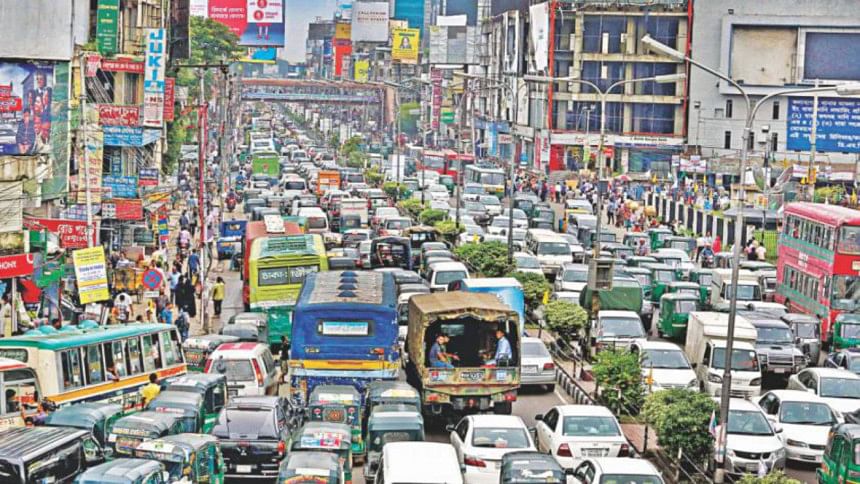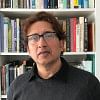Splitting the capital, saving the country

Once in a while, here and there, Dhaka's nostalgic charm may flash in some narrow streets of Old Town or around the Dhaka University campus. But the visceral experience of contemporary Dhaka occurs when one gets stuck in its paralysing traffic, sees its huddled masses and "building, building, everywhere", and breathes its rancid air. The city has colourful histories, but its current experience is no less than infernal. It doesn't take long for one to plunge headlong into Dhaka's frightening modernity.
The key problem is that everything happens in Dhaka, while other cities, including Chittagong, are increasingly "mofussilised." Dhaka's contribution represents over 36 percent of the country's GDP (Chittagong is a distant second at 11percent). Most educational institutions, hospitals, and multinational companies are located in Dhaka. More than 50 percent of the nation's industries and services are clustered in and around the capital. Approximately 2,000 people from impoverished rural areas across the country pour into the "city of opportunity" every day in search of a better life. On the other end of the economic spectrum, nearly 200 newly registered cars enter the lawless streets of Dhaka daily.
These asymmetries are bound to spawn urban absurdities. Most global surveys of "unliveable" cities routinely award Dhaka the top spot. Bangladesh's capital is bursting at the urban seams. Flyovers won't change course, nor would political sloganeering of environmental protection and a Detailed Area Plan.
The much valorised policy of decentralisation has not worked in Bangladesh. The question of why it hasn't worked is less useful than to explore what other options are available to save Dhaka, as well as Bangladesh.
Time has come when the idea of splitting the administrative functions of the capital into two cities should no longer appear absurd. On the contrary, the idea should rapidly sink in.
A great many Bangladeshis would shriek at the idea. But consider history. Examples of countries moving their capitals abound in the past - from the Egyptian and Greco-Roman times to as recently as 1997, when Kazakhstan, formerly part of the Soviet Union, moved its capital from Almaty to Astana. Last year, Argentina considered moving the federal capital from Buenos Aires to the historic city of Santiago del Estero. New capitals have been planned when existing ones became too congested, overpopulated, and politically unsustainable.
The US Congress created its new capital, Washington, D.C., in 1790, after meeting in eight cities, including Philadelphia and New York. George Washington took the oath of office as the first U.S president in New York City. St. Petersburg interrupted Moscow's status as the capital of Russia since the 14th century for nearly 200 years, from 1712 to 1918, when the Russian capital was moved back to Moscow. Ottawa became Canada's capital in 1857, after the Canadian legislature alternated between Toronto and Quebec City. Canberra was planned and designated as Australia's capital in 1927, after neither Sydney nor Melbourne would concede to the other as the capital.
In our own backyard, Calcutta was the capital of British India until 1911, when the colonial regime moved the capital to the northern city of Delhi, which had already served as the political and financial hub of several empires of ancient and medieval India. Pakistan moved its capital from the overpopulated and politically troublesome Karachi to Islamabad in the 1960s.
There are other recent examples, too. The idea of a new capital for Brazil had generated political traction since 1930. Brazil relocated its capital from the overcrowded and Europe-faced coastal city of Rio de Janeiro to the brand-new city of Brasilia in the interior of the country in 1961. Brasilia spurred new growth in the impoverished Brazilian hinterland. With the same nationalist ambition, Nigeria moved its capital from the overcrowded coastal city of Lagos to the centrally located, planned city of Abuja. Although not an ideal example, Myanmar's reclusive military junta has recently relocated its capital from the historic city of Yangon (formerly Rangoon) to the northern city of Naypyidaw.
There are other convenient models of capital relocation. Guided by a policy of administrative decentralisation, Malaysia has moved its many state functions and the prime minister's official residence to a suburb of Kuala Lumpur called Putrajaya, even though Kuala Lumpur remains the formal capital. In addition, some countries have multi-centric capitals. Bolivia's administrative capital is La Paz, while the legislative and judicial capital is Sucre. And, the Netherland's formal capital is Amsterdam, but the de facto seat of the country's legislature and Supreme Court is The Hague.
Given these examples, the idea of dividing the Bangladesh capital into two cities should no longer be considered radical. Indeed, we should begin to incubate this idea in our political and administrative heads. Given the historic significance of the Parliament building, the legislative arm of the government may stay in Dhaka. The executive and judicial branches, along with the cantonment, can move to the new city to initiate a culture of decentralisation. This model of decentralised government would be a great fit for Digital Bangladesh. Physical proximity as a prerequisite for governance is an outdated idea of the yore.
Moving the capital, of course, doesn't have to undermine the political and cultural significance of Dhaka. Its place in our nation's historic narrative is unassailable. Salam-Barkat's Dhaka, the glorious venue of our Language Movement, and the tragic Dhaka of the dark night of March 25 - all are forever burned in our collective memory. The relocation is guided hardly by hopeless abandonment of Dhaka, but rather by a pragmatic view of the nation's future. To save Dhaka is to reduce its urban footprint and to augment its ecological balance. On the other hand, a new capital could be the symbolic beginning of a corruption-free Bangladesh, a Bangladesh of political tolerance, civility, innovation, and confidence.
The new capital could be realised as the paragon of sustainable urbanism, with clarity in planning and ecological management of natural resources; affordable access to education, healthcare, and cultural facilities; and emphasis on mass transportation, rather than personal autos. This could be Bangladesh's maiden planned city of zero-carbon emissions with a strong policy emphasis on biking and walking.
Both Bangladesh and Dhaka deserve it. The year of 2015 is symbolic. The World Bank estimated that, with a gross national income per capita of USD1,046, Bangladesh broke into its "lower middle-income" category this year. It is time to weave a future-oriented, optimistic narrative.
The writer teaches at the School of Architecture and Planning, Catholic University of America, Washington, DC. He is the author of Impossible Heights: Skyscrapers, Flight, and the Master Builder (2015) and Oculus: A Decade of Insights into Bangladeshi Affairs (2012).

 For all latest news, follow The Daily Star's Google News channel.
For all latest news, follow The Daily Star's Google News channel. 



Comments